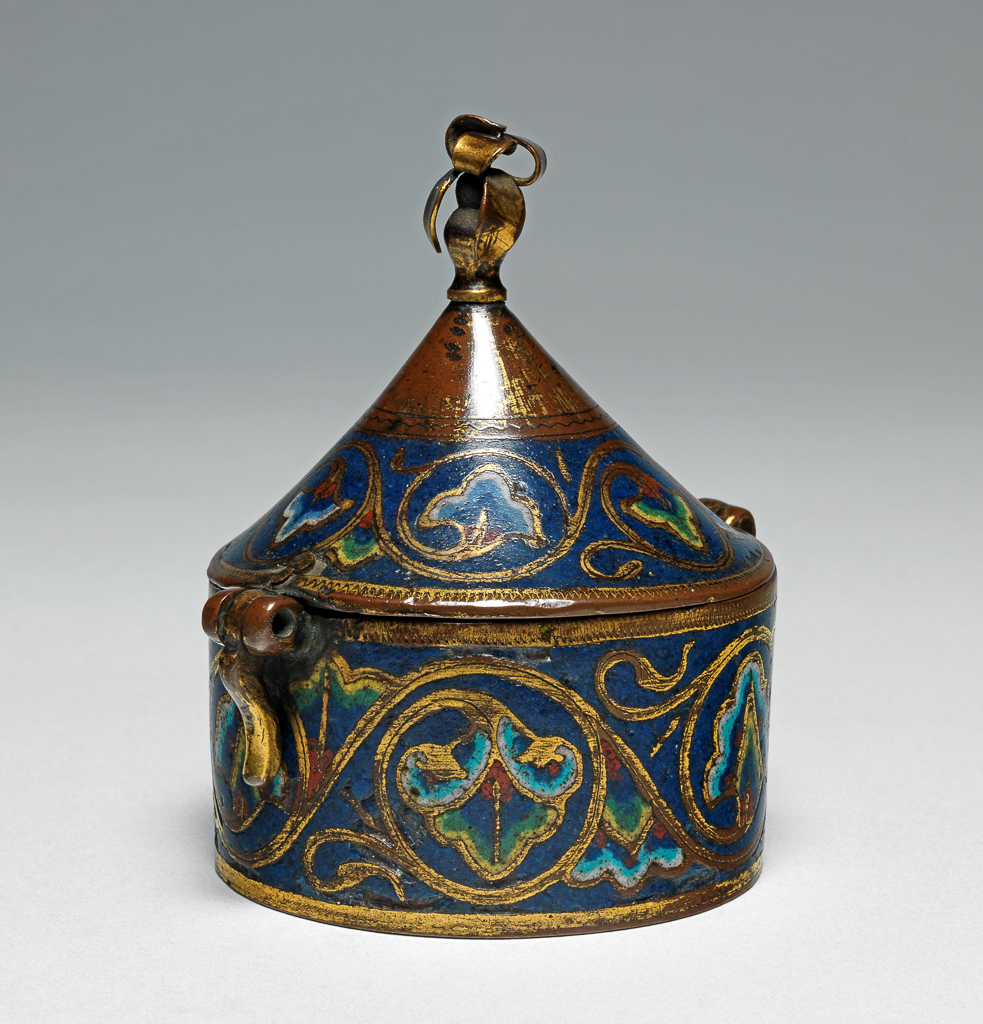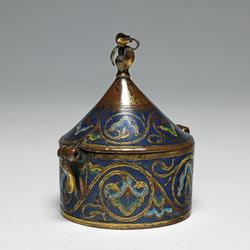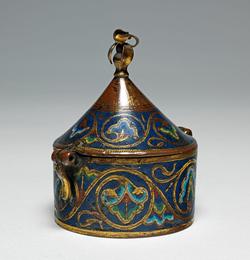Current Location: Gallery 32 (Rothschild)
Maker(s)
Maker:
Unknown
Entities
Categories
Description
Copper, champlevé, engraved, enamelled and gilt
Copper, champlevé engraved, enamelled in two shades of blue, green, yellow, and red enamels, and gilt; the interior wholly gilt. Cylindrical with a cupola inside, and a conical cover with ball knop capped by six petals or leaves, turned alternately inwards to meet at the top, and outwards. The lower part has pairs of small vertical loops on opposing sides; and the cover has one on each side which fits between the two on the lower part, forming the hinge and hasp. The latter has a projecting 'tongue'. The sides and cover are decorated with scrolling foliage with alternately upward and downward pointing leaves.
Notes
History note: Uncertain before donor
Legal notes
Given by the Rev. S. Dewick, MA, FSA
Measurements and weight
Height: 9 cm
Height: 3½ in
Width: 8.3 cm
Acquisition and important dates
Method of acquisition: Given
(1913-02-21)
by
Dewick, E.S.
Dating
13th Century
Medieval
Circa
1200
CE
-
1300
CE
Note
A pyx (from Latin pyxis, a box), is a container for the Euchar¬istic bread or Host (Latin hostia, a victim or sacri¬fice). By the thirteenth century two pyxes were considered necessary for each church: one to hold the unconsacrated wafers, and the other to hold the consecrated wafers. Numerous champlevé enamel pyxes have survived which suggests that they were among the most frequently commissioned liturgical objects. Foliated scrolls were one of the most common types of decoration on pyxes.
School or Style
Gothic
Components of the work
Decoration
composed of
enamel
( two shades of blue, green, yellow, and red)
gold
Base
Diameter 6.8 cm
Diameter 2⅝ in
Drum Only
Height 1½ in
Materials used in production
Copper
References and bibliographic entries
Identification numbers
Accession number: M.1-1913
Primary reference Number: 139827
Stable URI
Audit data
Created: Saturday 6 August 2011
Updated: Tuesday 12 November 2024
Last processed: Thursday 14 August 2025
Associated departments & institutions
Owner or interested party:
The Fitzwilliam Museum
Associated department:
Applied Arts

 IIIF Manifest
IIIF Manifest





